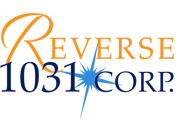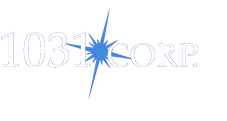Most taxpayers know about the tax-deferred benefits of 1031 exchange but many are not as familiar with reverse exchanges. A reverse 1031 exchange is a strategy used when you want to acquire the replacement property prior to conveying title of the relinquished property to a buyer. The most common situations leading to a reverse exchange are as follows:

Our reverse exchanges are structured under Revenue Procedure 2000-37 which provides a 180-day “safe harbor” period to “park” title until the exchange can be completed. Under this structure, we create an entity to act as the Exchange Accommodation Titleholder (EAT), bound by a qualified exchange accommodation arrangement (QEAA) which is essentially a “parking” arrangement. As an exchange is considered the continuation of the original investment, you cannot own both the relinquished and the replacement properties at the same time. To facilitate the reverse exchange, title to either the relinquished or the replacement property is held by an EAT until the relinquished property can be conveyed to a buyer. The Revenue Procedure allows the EAT to “park” title for a maximum of 180 days.
In today’s market, investors often locate the replacement property before putting the relinquished property on the market. A reverse exchange is often preferred because investors want the time to locate the desired replacement property without the pressure of the 45-Day Identification Period timeclock ticking. The reverse exchange provides the opportunity to sell the property at market value without forcing a fire sale. A reverse exchange can also afford the opportunity to complete improvements on the replacement property prior to giving up the relinquished property which is often essential when relocating a business.
To acquire the property, the EAT borrows the funds from the investor or more often from the investor and a third-party lender. During ownership by the EAT, the EAT leases the property to the investor through a triple net lease which gives the investor the opportunity to report the income and expenses on investor’s tax return.
Reverse exchanges do take more planning and cost slightly more than a typical forward exchange but are certainly well worth the time and expense to preserve the tax-deferral treatment under Section 1031.
Reverse exchanges make the impossible, possible.

The 1031 Exchange Team brings over three decades of combined exchange industry experience and has facilitated thousands of exchanges. Based in Collegeville, Pennsylvania and Bend, Oregon, our exchange experts are ready to answer your questions, guide the process, and facilitate your exchange.
Laura serves as President of Reverse 1031 CORP. and General Counsel for 1031 CORP. Laura counsels 1031 CORP. with legal matters, operations, strategic direction, and business development and leads our reverse exchange business at Reverse 1031 CORP. She has an extensive legal background in real estate transactions, land use, construction disputes, compliance, and civil litigation, and her expertise in real estate and development and I.R.C. Section 1031 gives her unique capabilities to serve clients.
Laura joined 1031 CORP. in 2019 and returned in 2024 after two years at a Coeur d’Alene law firm. She previously served as 1031 CORP.'s Vice President and Regional Manager for the Pacific Northwest. She has experience in real estate development and is an admitted attorney in Arizona, Idaho, and Oregon. Laura graduated from the Sandra Day O’Connor College of Law at Arizona in 2013 with her juris doctorate. She obtained her Bachelor of Science degree from California State Polytechnic University, San Luis Obispo.
Grace joined the 1031 CORP. team in 2017. She utilizes her administrative and managerial experience to keep the exchange process easy for her clients. Grace earned a Bachelor of Science from Cabrini College and is based in our Collegeville, Pennsylvania branch office.
Ryan joined the 1031 CORP. Exchange Team after serving as a leasing specialist at a property management company. His experience in sales, client services, and documentation has equipped him to adeptly serve clients and navigate the intricacies of exchanges. He holds a bachelor's degree in telecommunications from The Pennsylvania State University. Ryan supports delayed exchanges and reverse exchanges as part of Team Grace.

©2025 1031 CORP. All rights reserved. Privacy Policy